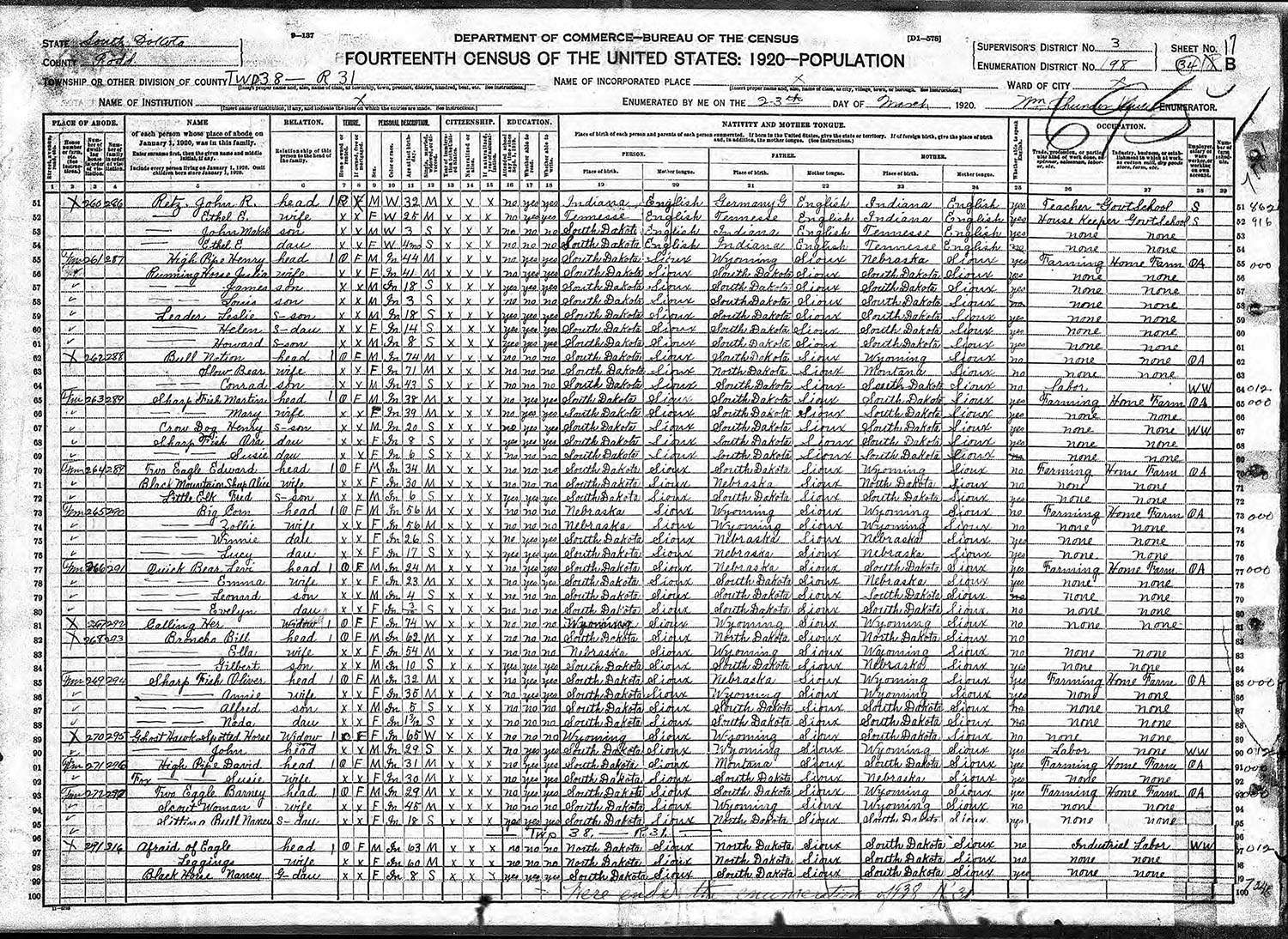

Census RecordsFederal Population Censuses, 1790–1950 |
The U.S. government has taken a census of population every ten years since 1790. The National Archives houses federal population census records from 1790 through 1950. Learn more about federal population census records
Researchers generally begin with the most recent census and work backwards in ten-year increments to locate individuals or families in previous generations. To search you will need the name and location of the individual or family.
Try to find your individual or family in as many censuses as possible because certain questions changed between censuses. Note that American Indians are not always identified as such prior to the 1900 Census.
See Search Census Records Online for links to digitized images and indexes.
What Information Can Census Records Provide?
Because the U.S. government often asked different questions on different censuses, not all census records provide the same information about an individual or family. Depending on the year, census records may provide some or all of the following information about American Indians and their families:
- Name
- Age/birth information
- Gender
- Race
- Location
- Family relationship
-
Tribe
See the Census Bureau's Index of Questions for the questions asked during each census year. See Census Charts and Forms for blank census forms.
Which Censuses Identify American Indians?
Few American Indians are identified as such prior to the 1900 Census. For exceptions, see the callout box to the right ("American Indians in Pre-1900 Censuses").
-
1790–1840: American Indians are not identified by race.
- 1850: People are identified as white, black, or mulatto.
- 1860: Indian Territory is included at the end of the Arkansas schedules, but American Indians are not usually identified.
- 1870–1880: American Indians in the general population are identified by "I" or "In." Some federal reservations and Indian agencies are identified, but the schedules mostly list white or non-Indian residents.
- 1890: Most of the 1890 Census was destroyed in a Department of Commerce fire in 1921.
- The Census Bureau published aggregate data about American Indians in the "Report on Indians Taxed and Not Taxed in the United States (Except Alaska) at the Eleventh Census: 1890.”
- 1900–1910: American Indians on federal reservations and in the general population are identified. Special Indian schedules contained additional questions not included on the general schedules.
- 1920: American Indians are identified, but there are no special Indian schedules.
- 1930: American Indians are identified. Degree of Indian blood and tribe are noted. There are no special Indian schedules.
- 1940: American Indians are identified. Degree of Indian blood and tribe are not noted. There are no special Indian schedules.
- 1950: American Indians are identified in the general schedules. American Indians living on some federal reservations were enumerated on both the general schedule and in special Indian reservation schedules.
How Can I Access Census Records?
Federal population census records from 1790 to 1950 are digitized and available online. See Search Census Records Online for links to digitized images and indexes.
Why Can't I Find My American Indian Ancestor in Census Records?
Location and race can be useful in determining American Indian ancestry. However, the information provided in census records may differ from what you know about an individual or family. Discrepancies can be caused by the following:
- The individual’s response and self-identification
- Who reported the information to the census enumerator
- Enumerator’s error
-
The individual or family may be listed by their English or American Indian name
If you cannot find your ancestor in federal population census records, consider these possibilities:
- The individual's name may be spelled differently in the records. Try searching for variant spellings.
- There may be transcription errors with the indexing. Try browsing records by the location where the individual or family lived.
- The individual or family may not have submitted accurate information to the enumerator.
- The enumerator may have inadvertently left the individual or family off of the census.
-
The individual or family may not have been identified as American Indian on any federal government records.
You may also want to consult the instructions for census enumerators for each census year to see how enumerators were instructed to record American Indians.
If an individual is not identified as a tribal member in the federal population census, continue your search with Indian Census Rolls, followed by Bureau of Indian Affairs records.
